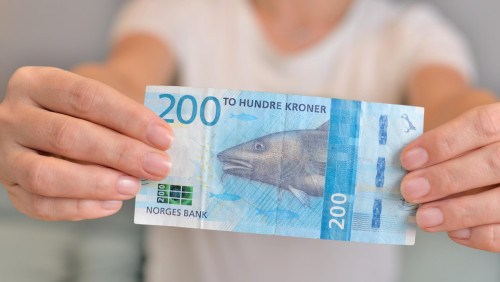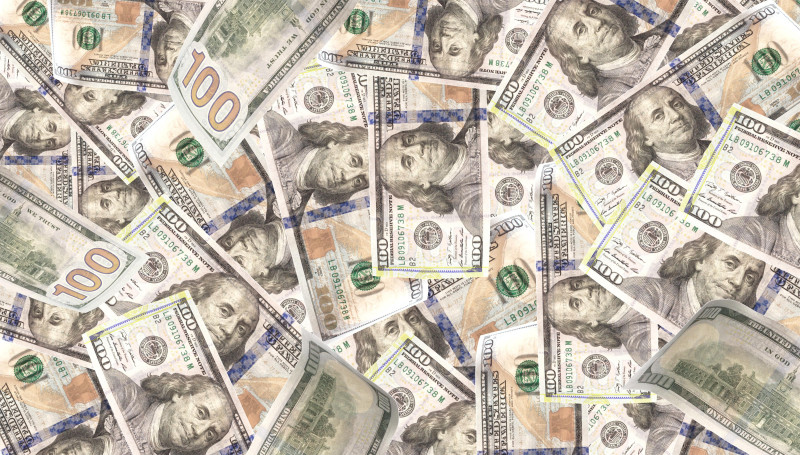English
The Norwegian krone celebrates its birthday. After 150 years, the situation is not looking great

The Norwegian krone currently has little chance of a significant improvement in its exchange rate. Fot. Adobe Stock, licencja standardowa
The Norwegian krone is celebrating its 150th anniversary today. On May 5, 1875, the Storting parliament passed a law introducing the new national currency. This event ended the era of the Danish thaler and the Swedish riksdaler, paving the way for Norway’s economic independence. The name refers to the Latin "corona," highlighting the royal heritage of the coins.
The first Norwegian krone coins were minted in silver and featured the image of King Oscar II, who reigned at that time. Banknotes appeared a bit later, in 1877, issued by Norges Bank, which was established in 1816.
Initially, the Norwegian krone was tied to the silver standard, ensuring its stability in international trade. In 1905, after the dissolution of the union with Sweden, Norway kept the krone as its independent currency. To this day, NOK remains the only legal tender in the country, although euros and dollars are also used in some cross-border transactions.
Initially, the Norwegian krone was tied to the silver standard, ensuring its stability in international trade. In 1905, after the dissolution of the union with Sweden, Norway kept the krone as its independent currency. To this day, NOK remains the only legal tender in the country, although euros and dollars are also used in some cross-border transactions.
Norwegian krone exchange rate. What affects NOK
Over the decades, the Norwegian krone has undergone numerous reforms, including the transition to the gold standard in 1931 and its abandonment during World War II. In 1994, Norwegians rejected the idea of joining the EU, thus opting out of the euro and sticking with their own currency.
The value of the Norwegian krone (NOK) today depends on oil prices, as Norway derives a significant portion of its income from commodity exports, which strengthens the currency when prices rise and weakens it when they fall. Norges Bank’s monetary policy, including interest rates, attracts or deters foreign investors, stabilizing the NOK exchange rate.
Geopolitical tensions, such as the war in Ukraine and in the Middle East, cause capital outflows and exchange rate fluctuations by disrupting supply chains. The NOK is a currency sensitive to speculation and political risk. The Norwegian krone is prone to fluctuations due to Norway’s open economy. A single economic shock (e.g., the coronavirus pandemic) is enough to trigger a drastic drop in the currency’s value.
The value of the Norwegian krone (NOK) today depends on oil prices, as Norway derives a significant portion of its income from commodity exports, which strengthens the currency when prices rise and weakens it when they fall. Norges Bank’s monetary policy, including interest rates, attracts or deters foreign investors, stabilizing the NOK exchange rate.
Geopolitical tensions, such as the war in Ukraine and in the Middle East, cause capital outflows and exchange rate fluctuations by disrupting supply chains. The NOK is a currency sensitive to speculation and political risk. The Norwegian krone is prone to fluctuations due to Norway’s open economy. A single economic shock (e.g., the coronavirus pandemic) is enough to trigger a drastic drop in the currency’s value.

Many transactions, including those in the extraction market, are conducted in other currencies.Photo: stock.adobe.com/standard license
NOK price compared to other currencies
Looking at 2025, we can see that in mid-October, the Norwegian krone is not in the worst situation. More broadly, however, the currency’s exchange rate is historically weak. The US dollar is valued at an average of 10.06 NOK. This is 7.7% better than last year and at the same time nearly 8.0% worse than in the same period in 2020. Over longer cycles, the situation looks even worse.
On October 16, the Polish zloty was valued at an average of 2.76 NOK. The euro cost about 11.73 NOK. For 2025, both rates are average. However, looking at a longer period, it is clear that the Norwegian krone has been experiencing a crisis for several years.
On October 16, the Polish zloty was valued at an average of 2.76 NOK. The euro cost about 11.73 NOK. For 2025, both rates are average. However, looking at a longer period, it is clear that the Norwegian krone has been experiencing a crisis for several years.
Dodaj komentarz
Wyślij
